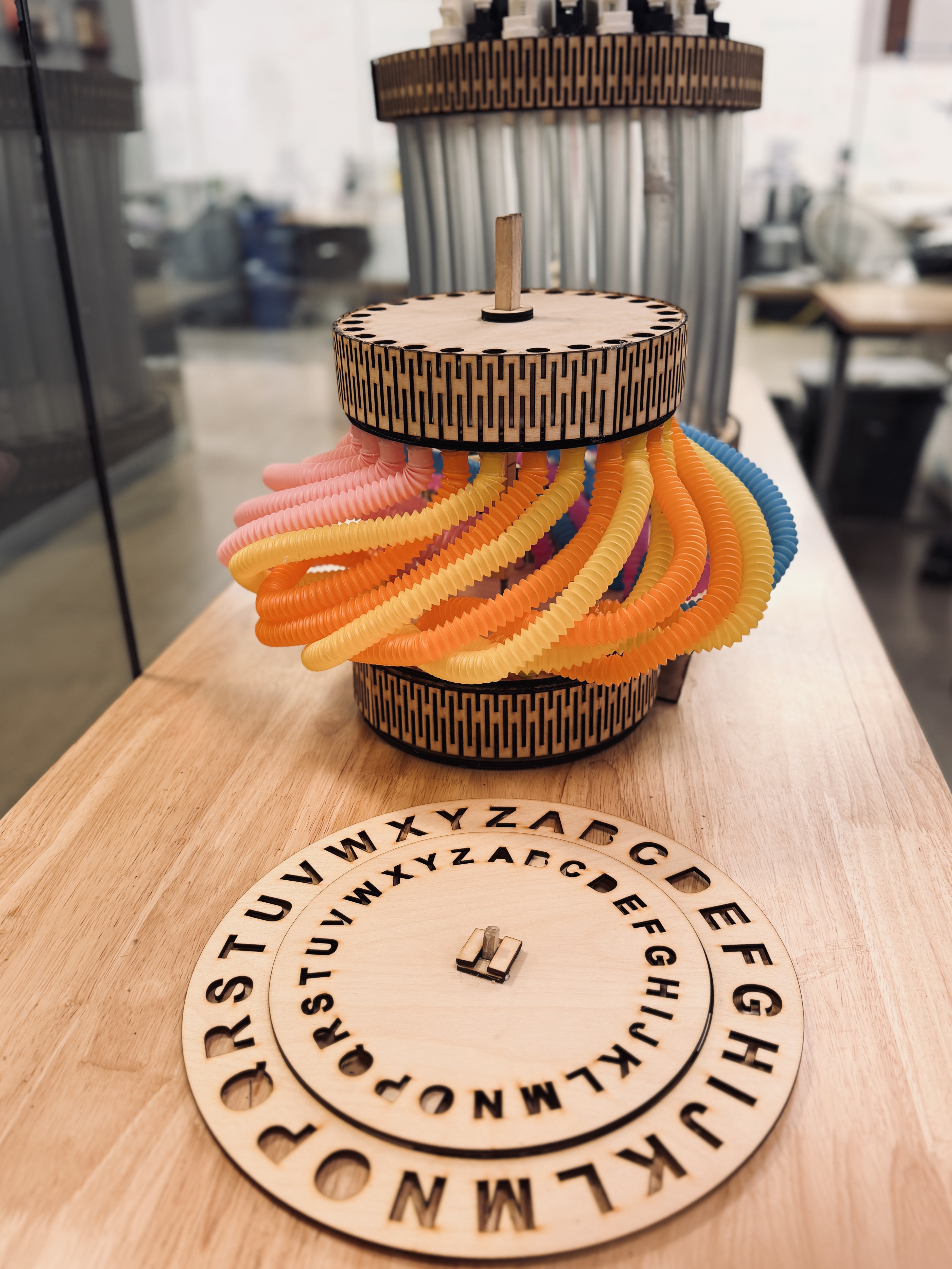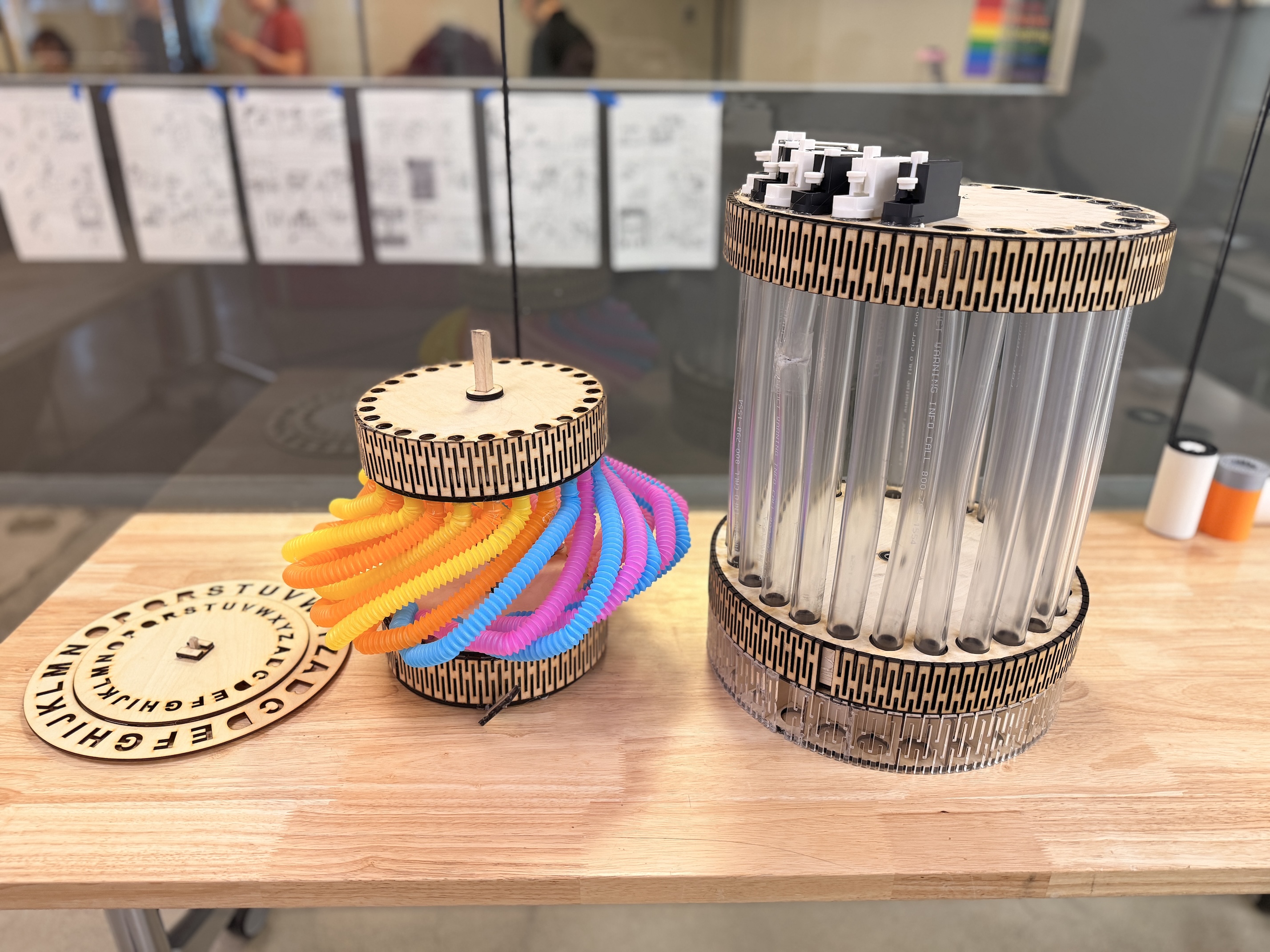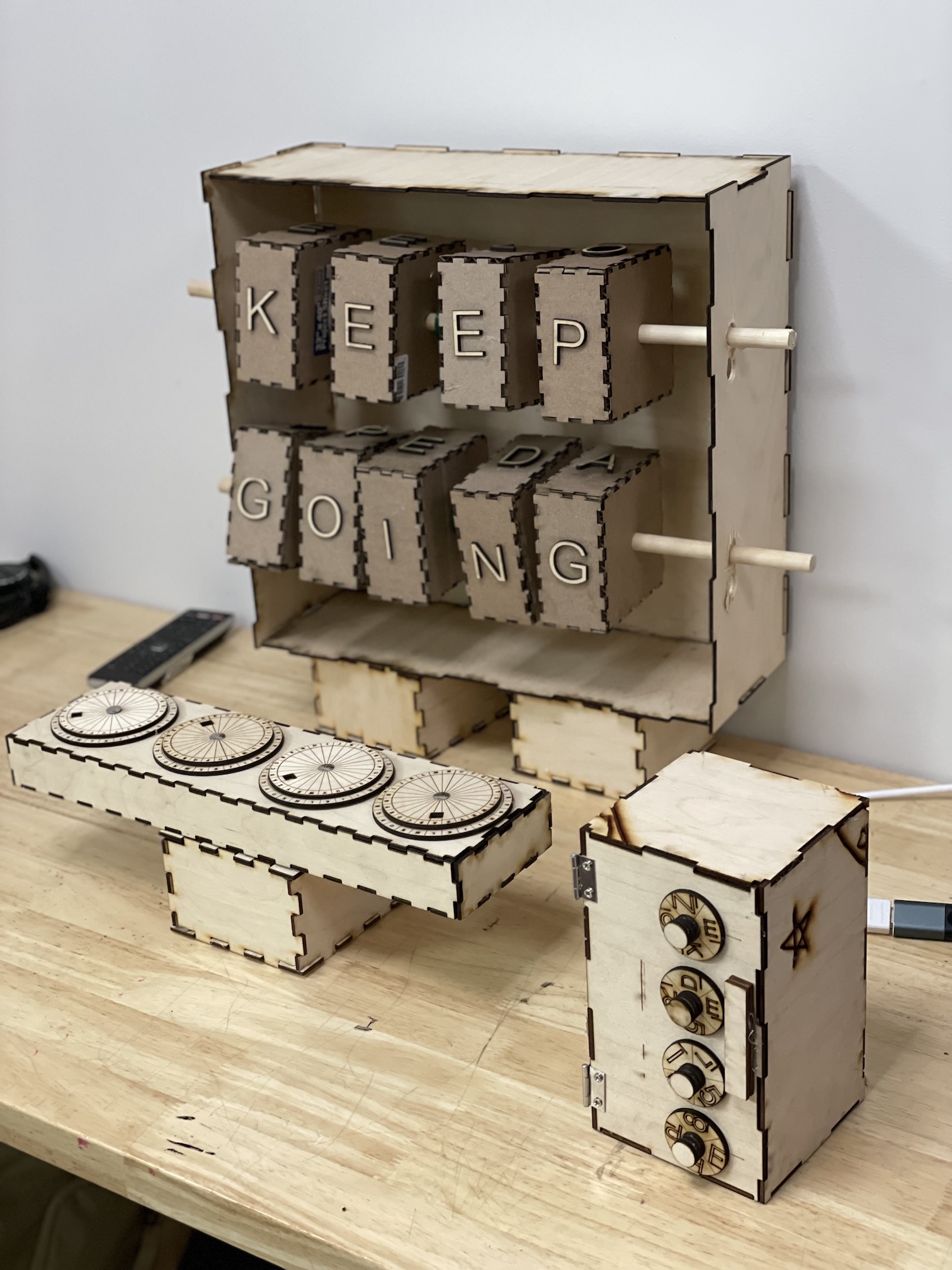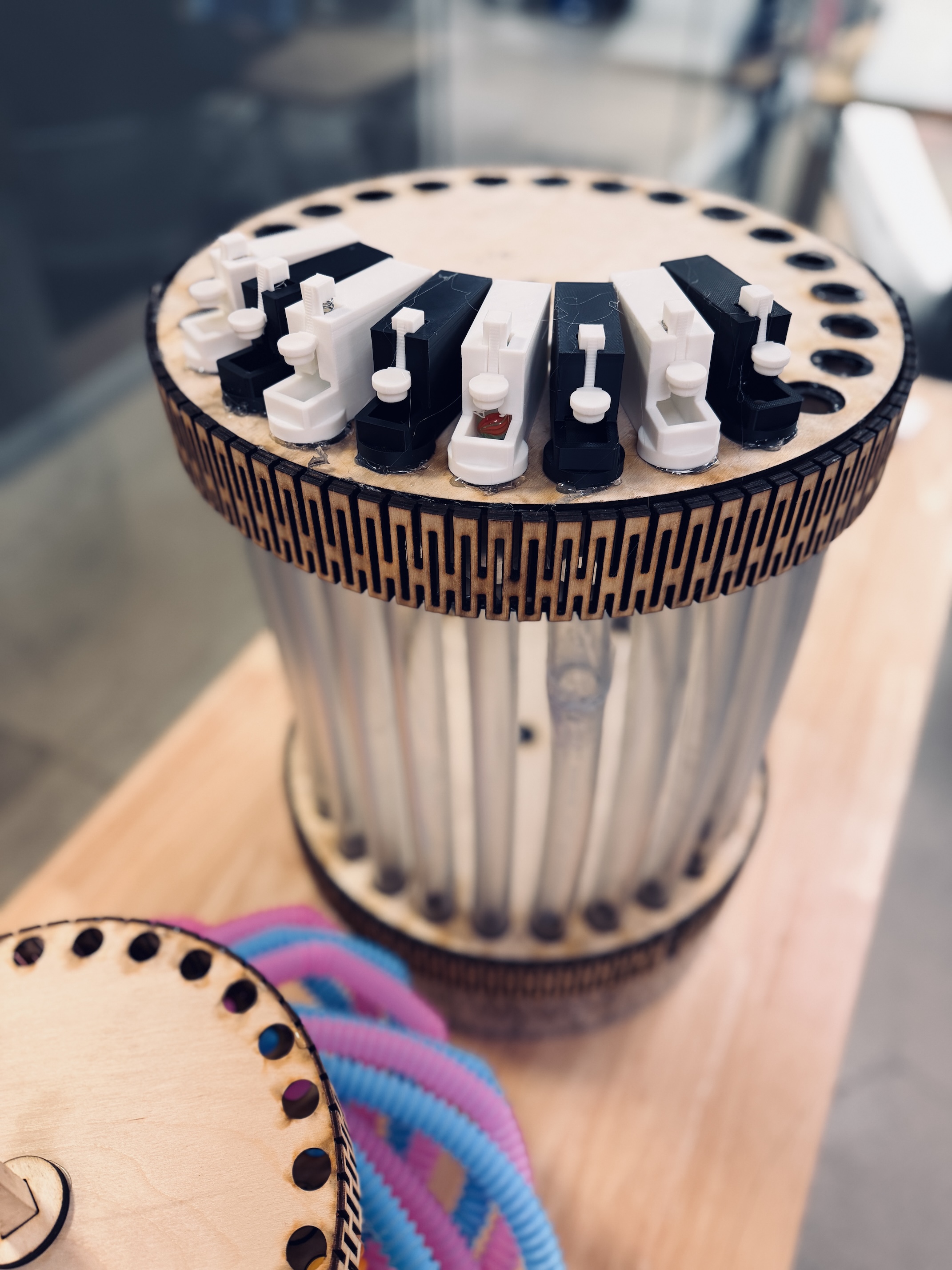November 4, 2025
Inside the “Cryptography Museum of Secrets” Studio
Students learn to think like codebreakers, cryptographers, and exhibit designers

When NuVu High School introduces a new studio, it typically involves a challenge that sits at the crossroads of engineering, logic, and creativity. This is exactly the inspiration behind NuVu Coach Ayush Gandhi’s most recent studio—Cryptography: The Museum of Secrets. This fall, Ayush invited students to think like codebreakers, cryptographers, and exhibit designers, using both math and art to explore how humans hide and protect information.
“I wanted students to learn about encryption and decryption—and to understand how humans have used cryptographic methods to communicate messages within an ingroup while ensuring that outsiders can’t decode them,” says Gandhi. “At the same time, I wanted them to model what actually happens inside a computer when these encryption technologies are running.”

The studio’s focus on cryptography wasn’t just about theory. In an era where nearly every aspect of life leaves a digital footprint, Ayush saw an opportunity for students to reflect on data privacy and the hidden mechanics that keep personal information secure. “If people understand how encryption works, they can be more mindful about how their data is shared and protected,” he says.
To make these complex ideas accessible, students were tasked with designing interactive exhibits that could explain cryptography to a general audience. “I wanted them to think like exhibit designers—how do you communicate something deeply technical in a way that’s engaging and tangible?” Gandhi explains. “It’s not just about understanding encryption, it’s about teaching others through design.”
From Secret Codes to Escape Rooms
The studio produced four distinct projects, each blending technical understanding with creative problem-solving. Two groups focused on Caesar ciphers—a simple yet historic form of encryption in which letters are shifted by a set number in the alphabet. One team built a 3D model of rotating cylinders, where the top plate spins and a ball travels through a maze of pipes, physically demonstrating how letters shift to form encoded words. “It’s a fun and tactile way to see what’s happening,” Ayush says. “You can actually play with it and understand the concept.”

Another group created an escape room experience in which participants had to decode messages to progress through the space. This hands-on, gamified approach transformed abstract algorithms into an adventure—merging storytelling with problem-solving.
Meanwhile, another student, Bryson, pursued a more experimental route, hiding ciphers in light and shadow patterns. His prototype used photoresistors and Morse code pulses to reveal a secret message or unlock a box only when the right combination of light signals was used. Though the final exhibit was incomplete, the electronics behind it were fully functional—proof of his inventive engineering.
The fourth project brought the theme squarely into the modern era. Students simulated the creation of viruses, ransomware, and antivirus software, learning firsthand how digital threats evolve and how systems defend against them. “They realized how easy it is to build a virus,” Gandhi recalls, “and how much harder it is to build the antivirus to stop it. That realization really stuck with them.”

Co-Creating the Studio
For Gandhi, this studio represented new territory. “I approached it through discussion—offering perspectives rather than instructions. In a way, the students and I were co-creating the studio together.”
That openness became part of the learning process. Students weren’t just completing assignments—they were collaborating with their coach to solve problems that blurred the line between digital and physical, theory and play.
In the end, the “Cryptography Museum of Secrets” didn’t just decode hidden messages—it revealed what makes a NuVu design studio so distinct. It’s a space where ideas evolve through experimentation, where students become teachers, and where curiosity itself becomes the key to unlocking understanding.






